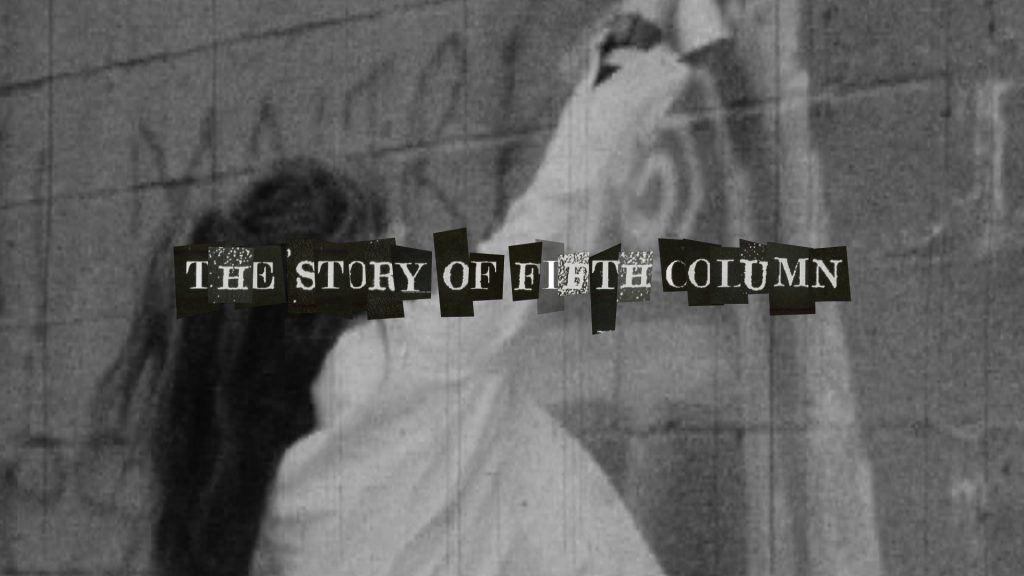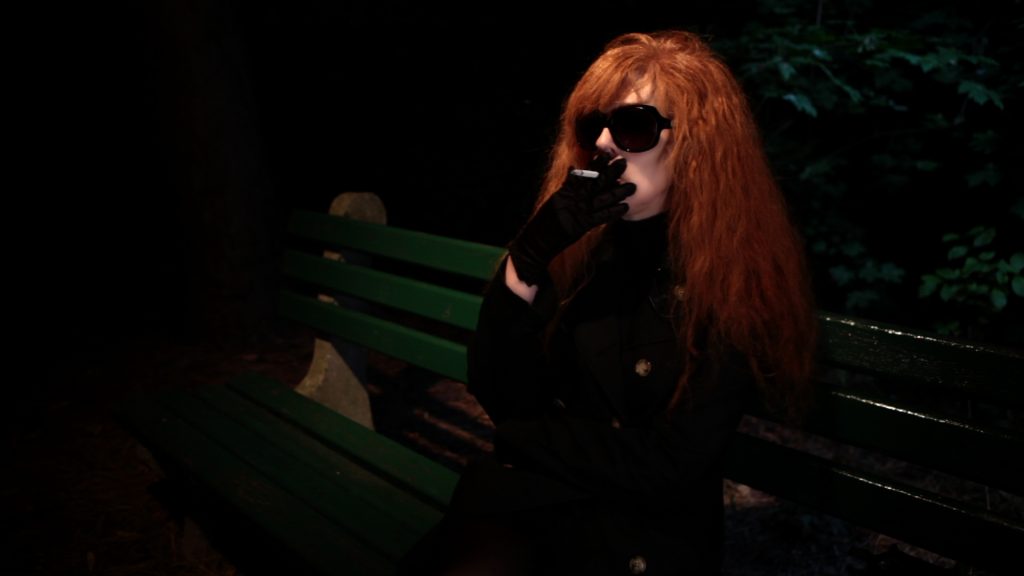 Fifth Column is an inspirational group of women from Toronto who melded filmmaking, music, zinemaking and other DIY endeavours to break rules and make their own brand of art in the mid-to-late 1980s. Featuring a rotating group of members including G.B. Jones, Caroline Azar, Beverly Breckenridge and many others, the band responded to the alienation they felt due, in part, to implicit restrictions on sexuality and is credited with establishing queercore and influencing riot grrrl.
Fifth Column is an inspirational group of women from Toronto who melded filmmaking, music, zinemaking and other DIY endeavours to break rules and make their own brand of art in the mid-to-late 1980s. Featuring a rotating group of members including G.B. Jones, Caroline Azar, Beverly Breckenridge and many others, the band responded to the alienation they felt due, in part, to implicit restrictions on sexuality and is credited with establishing queercore and influencing riot grrrl.
Kevin Hegge felt that the world deserved to know more about this all-female ensemble, and so he made the film She Said Boom: The Story of Fifth Column. Broken Pencil spoke to Hegge about how the band inspired his work and how he managed to cram such a vast story into a 64-minute film.
Broken Pencil: You are an artist and filmmaker. Did Fifth Column or the individuals within Fifth Column have any influence on your work previous to this film?
Kevin Hegge: Yeah. I was making video and Super 8 stuff from time to time — short collaborative works — and I would say they were definitely influenced by that idea of DIY filmmaking. In general [Fifth Column] sort of did the type of work I’m interested in — a multidisciplinary mash-up of all sorts of work. I don’t think I was ever directly referencing their work, but for sure it’s that sort of community that I feel lends itself to what I like to do, for sure.
BP: What triggered the decision to pursue a documentary about Fifth Column?
KH: It was so many things.
I was working at a record store and being [considered] the queer one or ‘the gay guy’ at the record store, or basically wherever I work. There’s such a huge hardcore scene and hardcore fans are so obsessive and they tend to be young, middle class, white dudes … and it was just like if you’re part of that obsessive music-collecting scene there are all these little cliques and my interests lied in where art students took over what it meant to be punk and the queer origins of that. I thought that Fifth Column were really emblematic of that. It was a little personal revenge. I really just wanted to submerge myself in that community, in the post-punk, queer, feminist relationship to what it means to be an artist and a performer.
At that same time I was looking at Canadian histories and the way we export our icons and our artist, and I’m in love with all these artists like Fifth Column and G.B. Jones’ work and Jane Sibery’s records and Buffy Sainte-Marie and Mary Margaret O’Hara and just so many amazing women who are doing inherently more avant-garde or challenging work. And then at the end of the day [our main export is] Neil Young. I mean, Neil Young’s great, I just see him as being amongst these other artists. How come these people who happen to be women and happen to be doing more interesting work, why does it not add up to something that we can support as part of our cultural heritage?
 BP: What was the most significant thing you learned about Fifth Column, or their impact on culture, while making the film?
BP: What was the most significant thing you learned about Fifth Column, or their impact on culture, while making the film?
KH: I guess I didn’t really understand how rough the political and industrial climate of our city was in relation to why these people were making work and how they positioned themselves in the city. It seemed like it was a very segregated and very cold industrial type downtown setting. So the geographic inspiration on the work that was happening in those films and why they look that way and the way the music sounds so murky, I think there’s an interesting relationship there that I learned about.
Fifth Column were really conducive to encouraging people to make this work and be part of a community that was making something with this minimal means and showing it.
When you talk to Fifth Column they’re never “we, we, we,” “us, us, us.” When I spoke to G.B. every statement was punctuated with references to so many names of so many people who were involved. They really see themselves as part of this really dense patchwork, so I guess a major part of the learning curve was trying to navigate through that.
BP: How difficult was it to weave together a multilayered history like theirs?
KH: There are so many stories that could be [told]. It’s called The Story of Fifth Column but I think it should have been called “A Movie About a Band Called Fifth Column” because it really isn’t “The” anything, it’s just one [aspect].
There are a lot of things I could have pursued; it could have been a lot grittier and more of an expose. It’s not a chronological thing, it’s about the early part of their career and the energies around filmmaking and making music and being in a band and how those things can energize a community.
She Said Boom screens tomorrow at Toronto’s Inside Out LGBT Film Festival (5pm, Sunday, May 20th at the Bell Lightbox) and at the Sled Island Festival in Calgary in June (9:30pm, Tuesday, June 19th at the HiFi Club). Kevin Hegge also hopes it will screen outside of Canada and in small towns so that young people can have the opportunity to learn more about (and perhaps identify with) the band.
